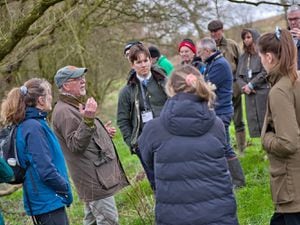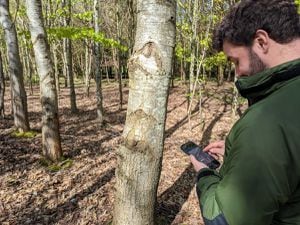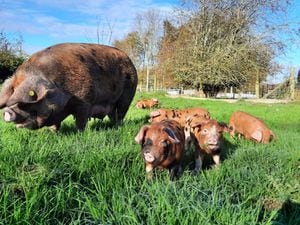Numbers-driven and science of beef production thinking
From digging graves and delivering milk 15 years ago, to running one of the country's top performing beef herds today, is the remarkable transformation achieved by Simon Frost at Hopping Farm, Youlgrave, in the Derbyshire Peaks. He says it is founded upon a numbers driven, science based, market orientated business strategy.
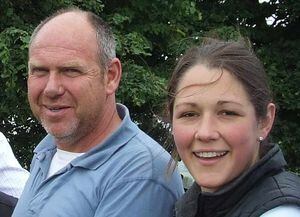
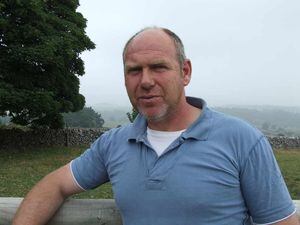
Mr Frost has been advised, and his beef unit monitored in detail, for the past 10 years by Harper Adams University beef specialist Simon Marsh.
From birth to slaughter, the 2011-2012 batch of bull calves averaged 1kg/day of carcase gain - that is carcase, not liveweight, Mr Marsh emphasises - weighing in at 462kg dead weight at 440 days of age. This calculation deducts 24kg carcase weight to account for the calf at birth.
Perhaps unusually among many of his peers, Simon Frost at Hopping Farm near Youlgrave in Derbyshire has an explicit mission and business strategy, which he will describe in detail to anyone interested. He's also a forthright character who can antagonise traditionalists with his numbers-driven, "farming is a business, not a way of life", approach.
Mr Frost's business model begins with the end in mind. "For the mainstream beef market, we have to make the product as attractive and affordable to consumers as possible," he says.
"We must recognise that most household budgets are under pressure, most recently due to energy price rises. We certainly don't want beef to become a choice for special occasions only. I believe that affordable, good quality beef on the supermarket shelf begins with maximising production of saleable meat at minimum cost.
"So to halt the serious recent decline in suckler cow numbers, we have to get across that profitable production for everyday affordable beef, without the single farm payment in due course, is realistic. We can't all chase niche market for premium native breed beef in export markets. Otherwise, we may as well hand our weekday supper home market to white meats."
To work out a strategy to achieve this, Simon Frost encourages fellow producers to study some important numbers as the basis of decisions. In suckler calf production, he says this begins with the cow, which needs to be medium sized - in his view, 600kg liveweight when the calf is weaned - with good milk production and sound maternal genetics. "Big cows cost too much to keep," he says.
This is particularly true on Hopping Farm's steep, south facing, Peak District slopes and thin soils that burn up easily in summer, where the chosen breed is Limousin cross Holstein-Friesian. In pursuit of the desired maternal characteristics in his 130-cow herd, a recent development is that a preferred Limousin sire specification is used for Mr Frost by his regular supplier of replacement heifers.
As an indicator of production efficiency, he is guided by the ratio of 200-day calf weight to cow's weight at weaning, the aim being well above 50%. An actual result of 56.5%, based on a 336kg calf and 595kg cow, is the highest ever witnessed by Simon Marsh from Harper Adams, and compares with a high performance SAC monitor farm's 43.6% (291kg and 667kg respectively).
To achieve this, Simon Frost's choice of terminal sire is determined by the combination of calving ease, 400-day calf weight and eye muscle area. "To get more from less, we need the best genetics," he says. "Unfortunately, high growth rate and muscle depth are usually associated with reduced calving ease, so you have to look carefully at bull data to find exceptions.
"Even so, we need nothing more than accurate information about the right things, and a plan that exploits this data for producing beef that shoppers will buy for a good value midweek supper, not just native breed sirloin steaks for Saturday's date night."
Based on this customer-led objectivity, and the breed society's ban on double-muscled bloodlines, Mr Frost's chosen terminal sire is Charolais. He trusts estimated breeding values (EBVs) implicitly, both in principle and the society's practice, and emphasises the value of growth rate over breed-based price premiums in producing large-scale affordable commodity beef as opposed to top shelf premium.
"An extra 100g a day carcase growth in a high EBV rather than average Charolais-cross will produce 40kg additional deadweight over 400 days, worth £160 a head," he says. "In contrast, a 20p/kg price premium for a 24-month old, native breed, 350kg carcase is worth only an extra £70. That's £90 a head less than the Charolais-cross option, in addition to which you have to keep the native breed about 320 days longer, at £1/day minimum to cover the animal's maintenance alone.
A critical phase for all suckler calf producers, according to beef specialist Simon Marsh, is weaning management. "It is essential that calves are offered creep feed and at Hopping Farm this starts in early August for bull calves and late August, heifers. Also before housing, Mr Frost clips out the calves' backs and treats them with a combined wormer-flukicide."
One more performance indicator that Simon Marsh picks out as business-critical is calf mortality, which in Mr Frost's spring calving herd is less than 1%. This industry-leading performance results from a number of factors, explains Zoetis vet Sarah Ritter. "It starts with good maternal traits in the cows and easy calving EBV bulls, and continues with good husbandry," she says.
"Every three weeks, calving boxes are mucked out and disinfected thoroughly, and the housing is well ventilated and well bedded. Each calf has its navel treated at birth and again 24 hours later, and Mr Frost ensures that all calves get an adequate quantity of colostrum at birth, which is something we can't emphasise enough for an optimum start in life.
"A few months later before weaning, calves are vaccinated with Rispoval® 4 against the four main viruses associated with pneumonia, RSV, PI3, IBR and the immuno-suppressive BVD. Mr Frost also makes a point of doing stressful things like weaning, worm and fluke treatment, housing and sale, all at separate times."
Then in mid-October at about seven months of age, calves are sold privately to the same buyer each year in the nearby Chesterfield area. They are started off there on 1.5kg/day of Hopping Farm creep feed and high quality grass silage, then changed gradually onto a top quality 16% protein home-mixed finisher concentrate. At only 14.4 months of age, the average finished bull in 2012 was 773kg liveweight, killing out at 60% for a 462kg carcase, having gained 1.66kg/day liveweight or 1.0kg/day carcase since birth on 1.66 tonnes concentrate and 680kg silage DM.
"To be profitable, beef production is a numbers game and depends on knowledgeable producers," says Simon Frost. "Otherwise, you're guessing or gambling or both. The way I do it, there's no room for sentiment or leaving things to chance. In poultry and pig production, you wouldn't last long without clear strategy, a strong knowledge base and high precision performance management. For beef to remain an affordable and attractive everyday choice to shoppers alongside strong competition from pork and chicken, how can we expect to be any different?"


